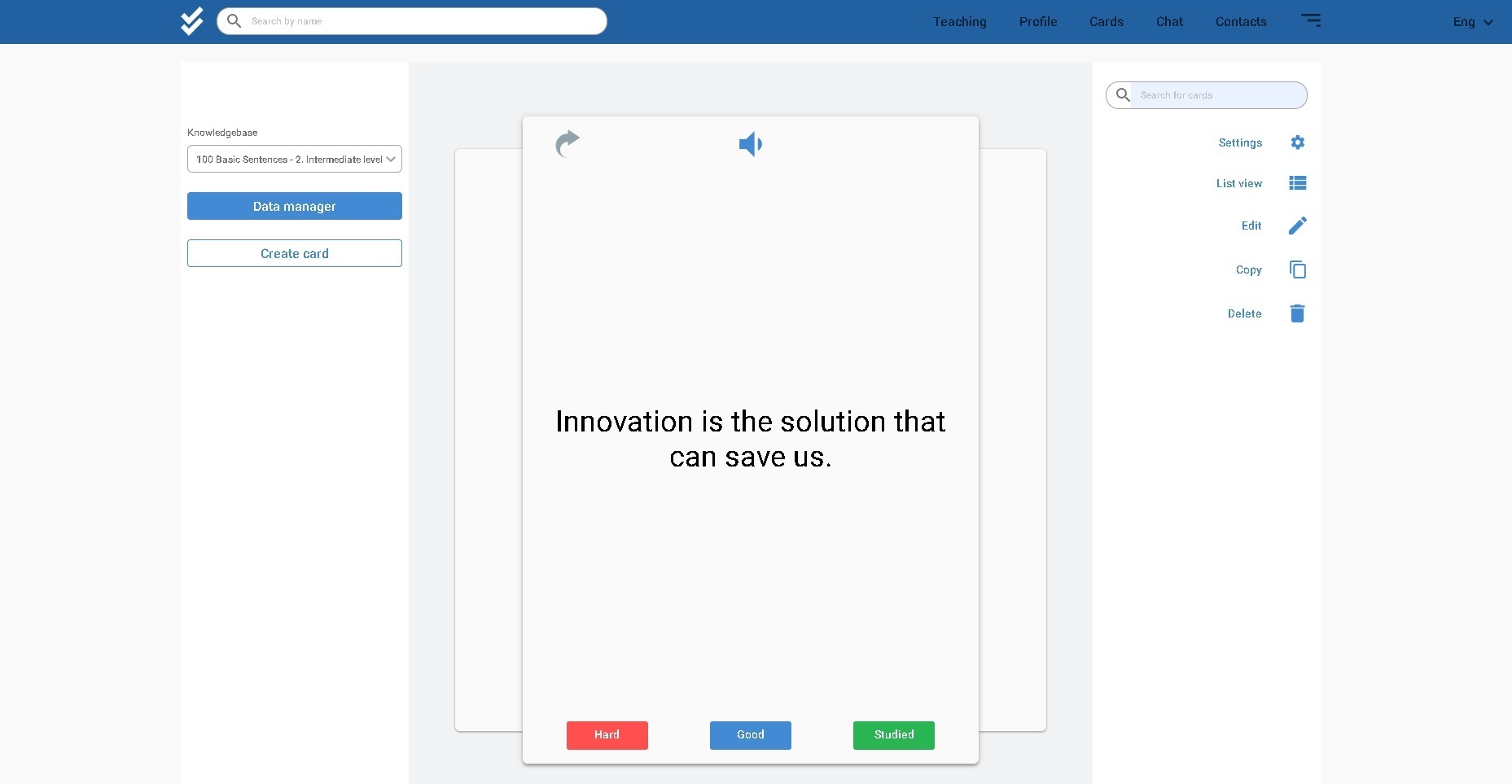Best Spaced Repetition Learning System
Andrei Kuzmin / 06 Jun
Spaced repetition is an effective memorization technique based on the repetition of educational material according to certain programmable algorithms with constant or variable time intervals. Although this principle can be applied to the memorization of any information, it is most widely used in the study of foreign languages. Spaced repetition does not imply memorization without understanding (but does not exclude it), and is not opposed to mnemonics.
Spaced repetition is an evidence-based learning technique that is usually performed with flashcards. Newly introduced and more difficult flashcards are shown more frequently, while older and less difficult flashcards are shown less frequently in order to exploit the psychological spacing effect. The use of spaced repetition has been proven to increase the rate of learning.
Although the principle is useful in many contexts, spaced repetition is commonly applied in contexts in which a learner must acquire many items and retain them indefinitely in memory. It is, therefore, well suited for the problem of vocabulary acquisition in the course of second-language learning. A number of spaced repetition software programs have been developed to aid the learning process.
Spaced repetition is a method where the learner is asked to remember a certain word (or text) with the time intervals increasing each time the word is presented or said. If the learner is able to recall the information correctly the time is doubled to further help them keep the information fresh in their mind to recall in the future. With this method, the learner is able to place the information in their long-term memory. If they are unable to remember the information they go back to the words and continue to practice to help make the technique lasting.

Sufficient test evidence shows that spaced repetition is valuable in learning new information and recalling information from the past.
Spaced repetition with expanding intervals is believed to be so effective because with each expanded interval of repetition it becomes more difficult to retrieve the information because of the time elapsed between learning periods; this creates a deeper level of processing of the learned information in long-term memory at each point.
In this method, flashcards are sorted into groups according to how well the learner knows each one in learning deck. The learners try to recall the solution written on a flashcard. If they succeed, they send the card to the next group. If they fail, they send it back to the first group. Each succeeding group has a longer period of time before the learner is required to revisit the cards. The schedule of repetition was governed by the size of the partitions in the learning deck. Only when a partition become full will the learner to review some of the cards it contained, automatically moving them forward or backward, depending on whether they remembered them.
Lingocard's spaced repetition learning system is a technique that is designed to help language learners memorize and retain new vocabulary more effectively. The system is based on the principle that learners are more likely to remember new information if they are exposed to it repeatedly over a period of time.

The spaced repetition learning system works by presenting learners with new vocabulary words and then gradually increasing the time between each review. Words that learners have difficulty with are reviewed more frequently, while words that learners already know well are reviewed less often. This approach is designed to optimize the learning process and help learners memorize new vocabulary more effectively.
To implement spaced repetition in software applications, we have developed a user-friendly interface with three simple buttons that control repetition algorithms with maximum efficiency. The entire learning process is automatically synchronized with the cloud server, so you can access spaced repetitions from any device. In addition, in the case of using mobile applications, all the studied material and memorization results are stored locally in the smartphone’s memory, which allows you to learn languages even without a stable Internet connection (on an airplane, etc.).
Also, our development team made spaced repetition algorithms with the possibility of individual settings for each user. It is possible to set the number of exercises per day with notifications at a certain time, use any dictionaries, set up flash cards, listen to pronunciation (memorize by ear) and even upload your own learning materials.
In my opinion, the spaced repetition system is the most effective method of learning a language and memorizing new vocabulary, and Lingocard's automated and personalized approach helps students optimize their learning process in the best possible way.
Lingocard apps are available for free in every language around the world, so you can use the best learning methods wherever you are.